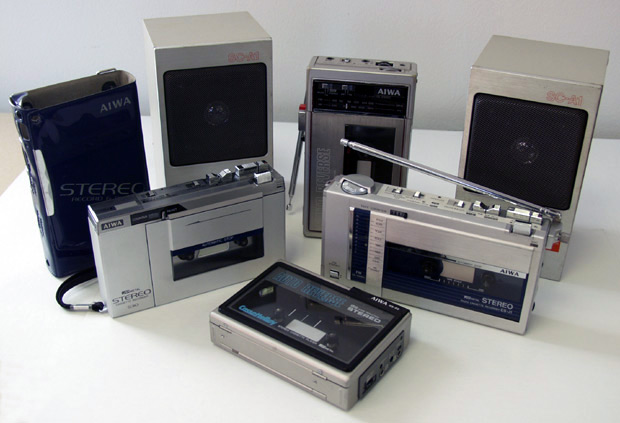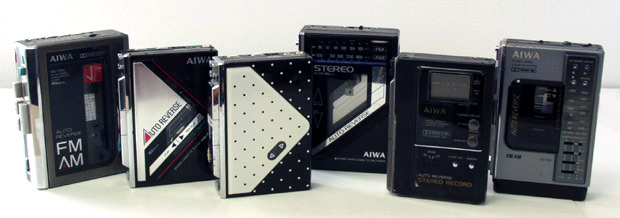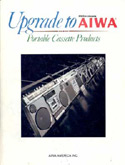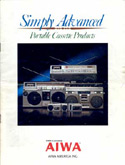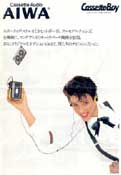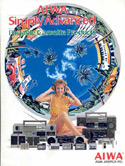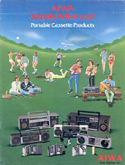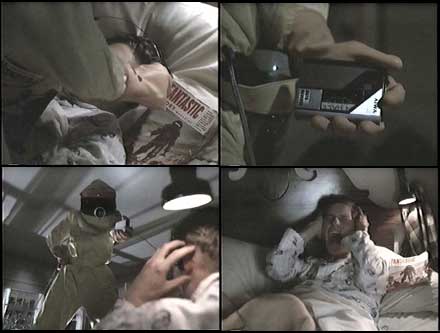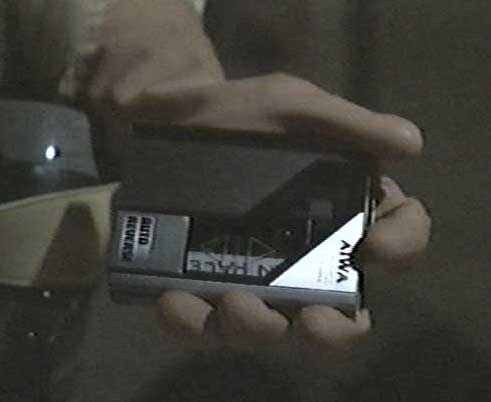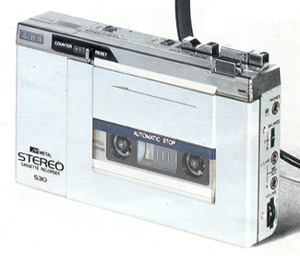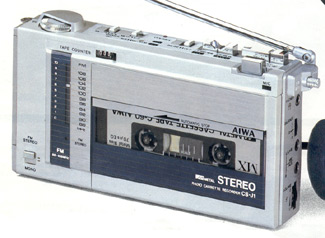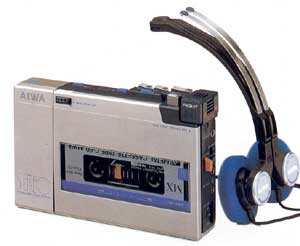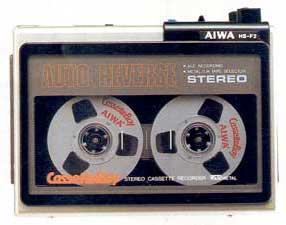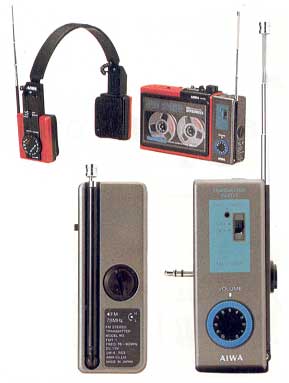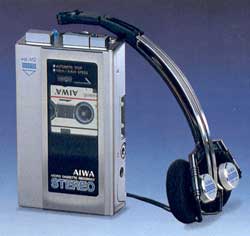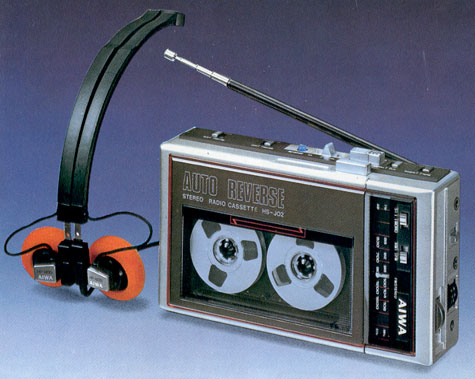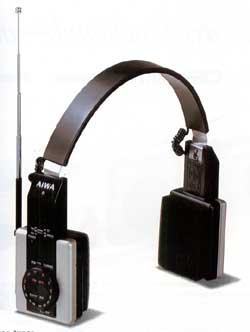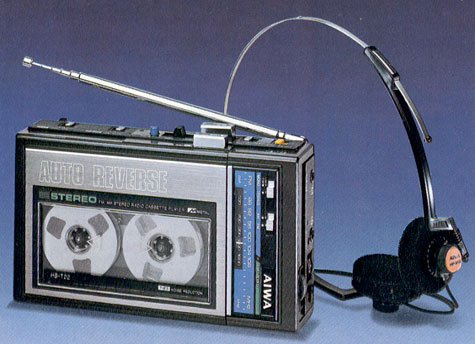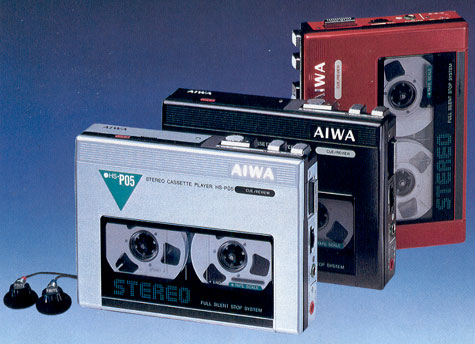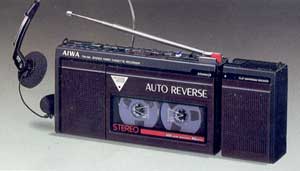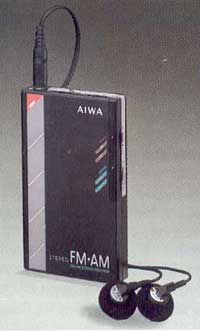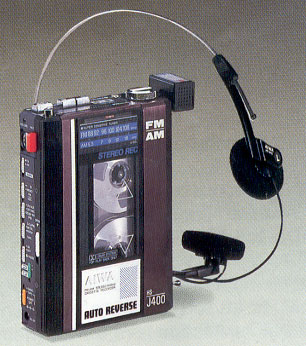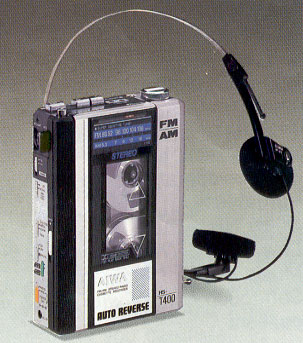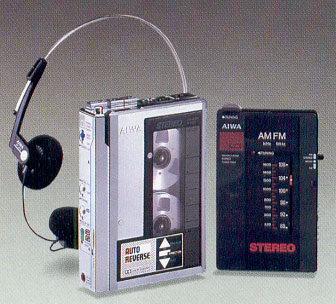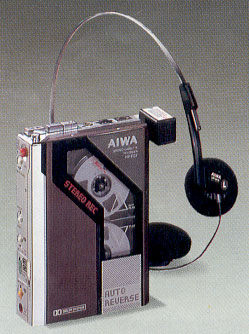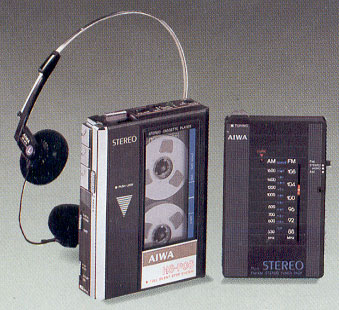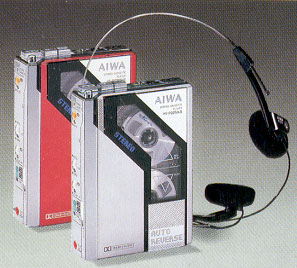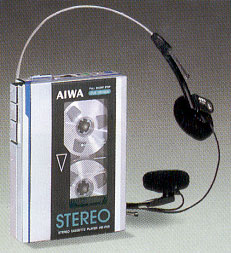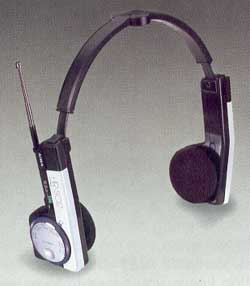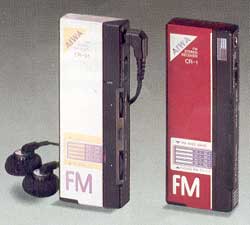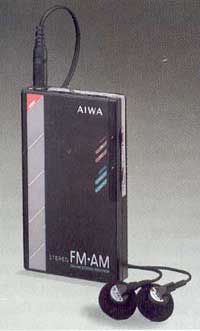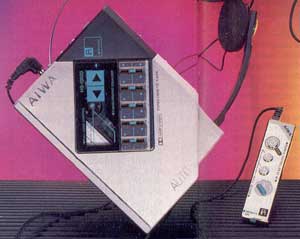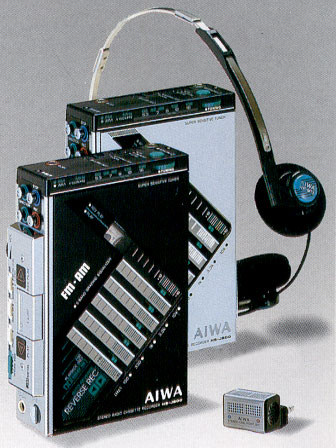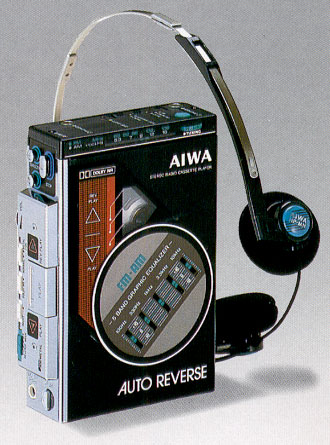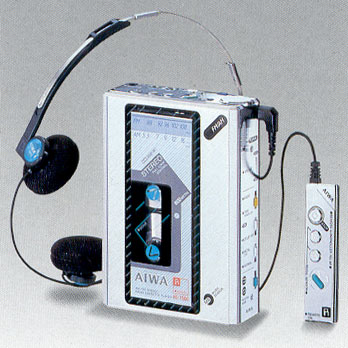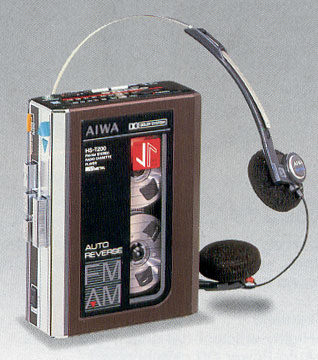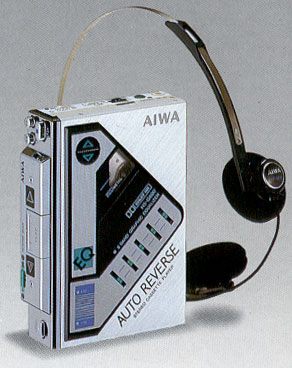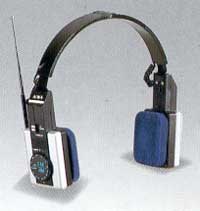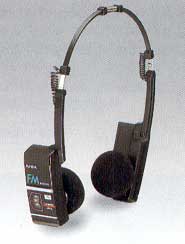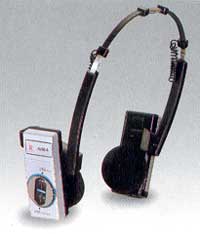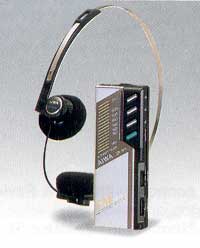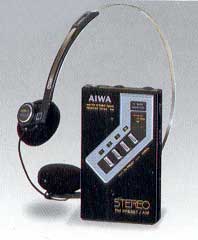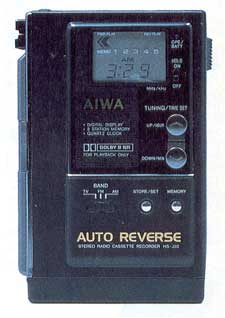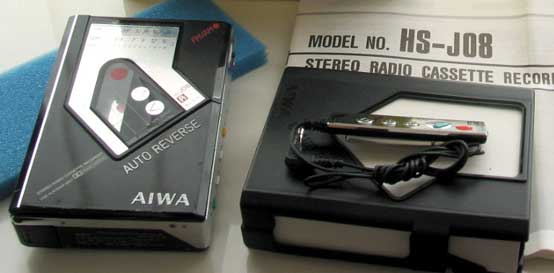
HS-J08
1985. What Walkman collection would be complete without an Aiwa portable stereo? This one looks so well-made, doesn’t it? AM/FM stereo tuner, recorder, carrying case too. Pretty boxy-looking, and the chrome is definitely a sweet touch. Check out that wired remote!!
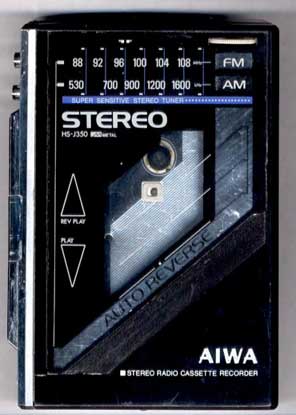
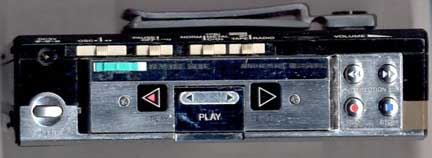
HS-J350
1987. Aiwa is and was one of the big leaders in the portable stereo industry in the 80s, and remains one today. We can see why as we take at look at the HS-J350. This gem has recording capability, tuner and auto-reverse. Aiwa is reputed for their high-quality home stereo tape decks and that quality reached the portables too. Here’s a pic of the top of the unit. This was Jay’s workhouse back in the early ’90s and he retired it recently due to a loose headphone jack. Of course he’ll still keep it! *Update*: With renewed zeal in his Walkman collection, Jay pulled out his iron and soldered that loose connection–it’s working fine! We thank you for your letter and prayers through that tough time.
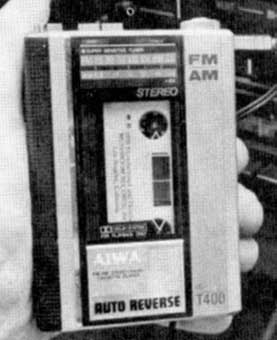
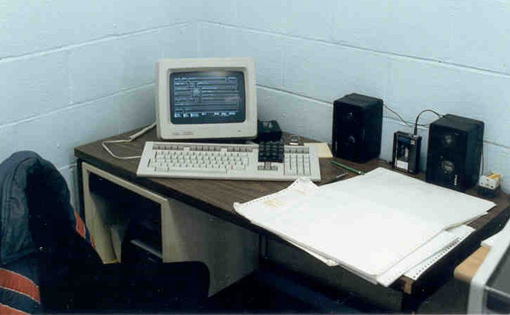
HS-T400
1984. Anyone have information on this one? The T400 offered Dolby NR (noise reduction), auto-reverse and an AM/FM tuner. We see a nice, bold tuning knob on the upper right. We’re guessing the unit was black and gray with chrome highlights like most around this period. Our friend K Wing recalls his HS-J07 performing faithfully during his college days, and it looked quite a bit like the T400.
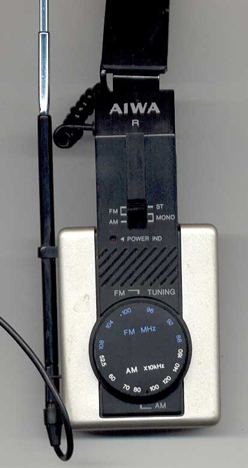
HR-S01
1982. $50 in 1982 wouldn’t buy too much as far as portable stereos go, but you could grab one of these nice headsets from Aiwa–slim, nice reception of AM and FM and even an output jack! Best of all, the headset is capable of folding up to a nice small package. As far as we know, this was Aiwa’s first radio-only portable stereo.
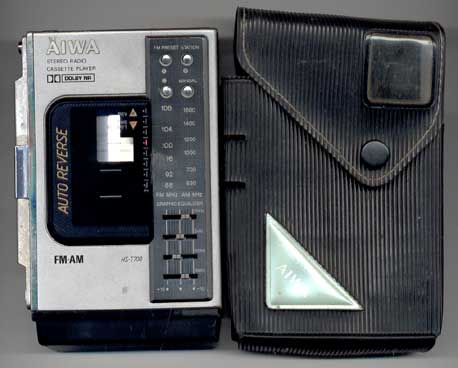
HS-T700
1987. One of Aiwa’s top portable stereo cassette players. Amazing number of bells and whistles on this one–3 presets, auto-reverse, 4-band graphic equalizer, FM Stere/Mono switch, Dolby NR, a very slick LED radio position indicator, LEDs to indicate battery power and tape direction. Battery pack on the bottom hold two AAA batteries.
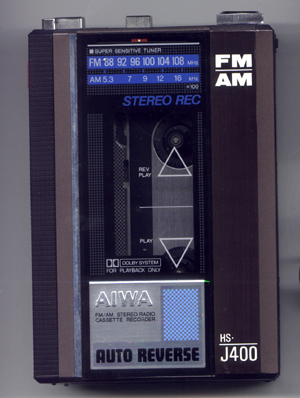
HS-J400
1984. Look familiar? It should, it’s the same chassis as the HS-T400, but with stero recording capability. Sold back in 1984 for around $135. Sleak, high performing, all Aiwa.
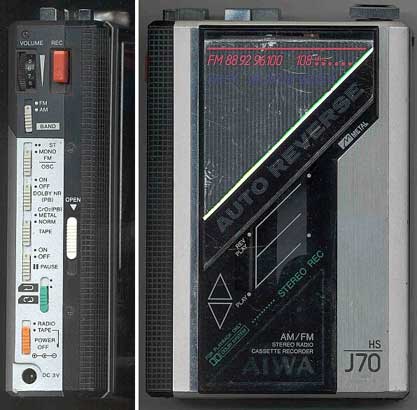
HS-J70
1985. A nice find by our friend K. Wing up in New Brunswick–this Aiwa stereo recorder sold for around $120 back in ’85 and offered all sorts of nice little options, including Dolby NR, auto-reverse and AM/FM tuning. I personally like the lock mechanism on the well door. We’re told that this model is very similar to the J07 also offered around this time, but the J70 lacked the music skip feature.
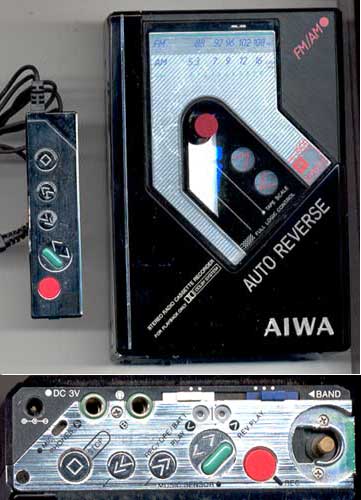
HS-J500
1985. Resembles the HS-J08, in fact it may be one in the same, differing only by model number. The chrome wired remote is slick, logic controls, hardshell case, dual headphone jacks and mini-whip antenna make this one of the desirable (and pricey) models from ’85.
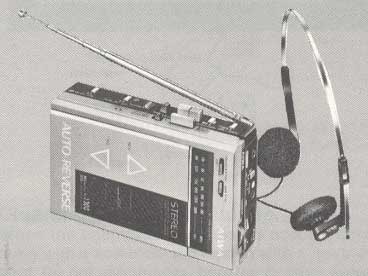
HS-J300
1983. We consider ourselves lucky to have just the instruction manual for this one. Very cool and hi-tech for 1983, the HS-J300 offered good radio reception, due to its included telescopic whip antenna, stereo recording, FM Stereo indicator LED, auto-reverse and internal mic.
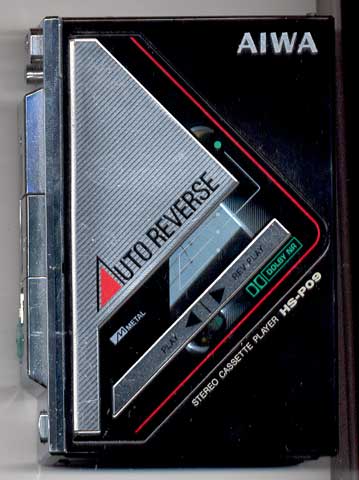
HS-P09
1986. Nothing particularly special about this one, but it small, solid and sounds great–all the reasons why Aiwa continues to be a leader in the portable stereo market.
We’re a little confused with the model number scheme used by Aiwa–we’ve gathered that the “T” after the hyphen indicates cassette player with tuner; a “J” indicated a recorder and a “P” means cassette player with no tuner. The “HS” and “HR” indicates the model is a personal stereo; the 3-digit models started in the mid-80s and continued well into the ’90s. We believe Aiwa distributed the same portables in Europe and North America, but under different model numbers.

